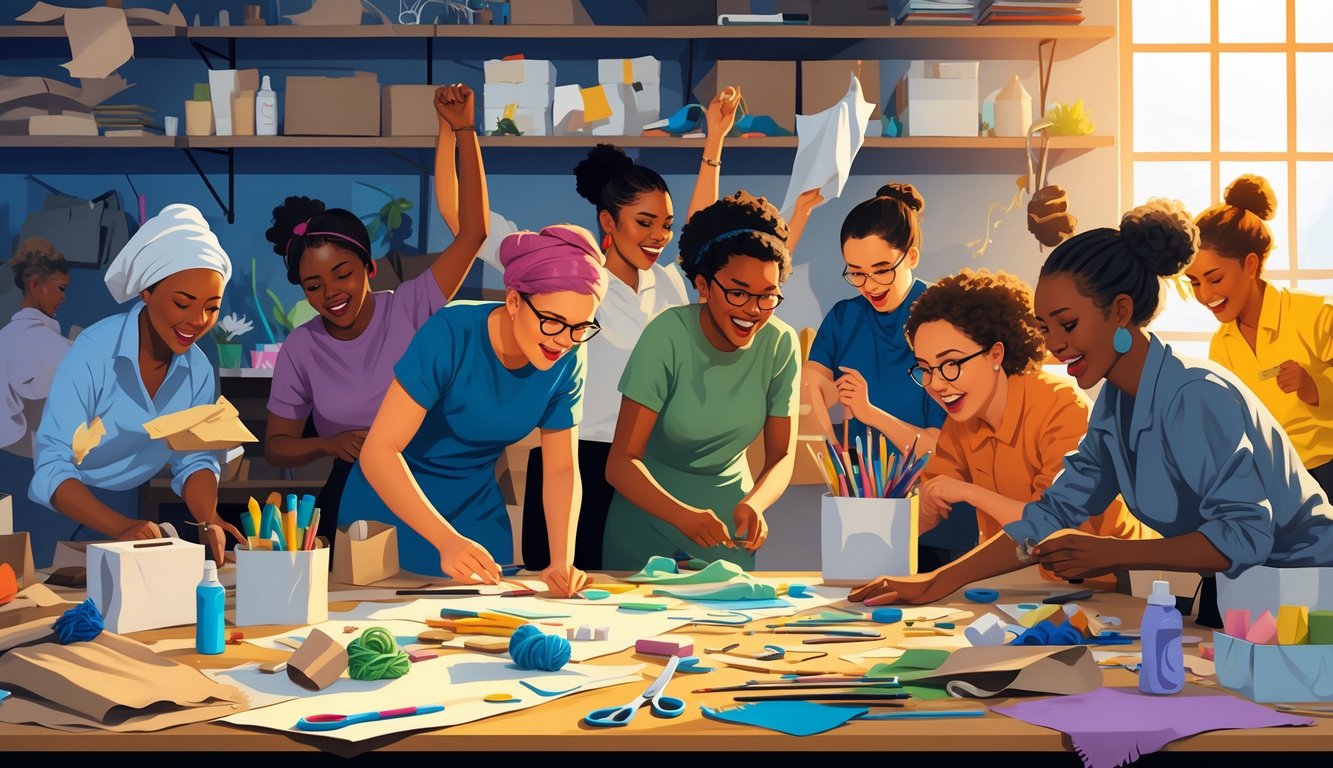
Planning for Future Material Shortages
Waiting for stable supplies? Ha. Good luck. Manufacturers still scrambling, raw material shortages everywhere, prices all over the place. At this point, crafters and small business owners are basically crisis managers. Sometimes it feels like even super glue’s a luxury.
Risk Management for Small Businesses and Hobbyists
Last month I called three wholesalers just to find basic cotton. One said their containers were stuck “indefinitely.” Planning? Sure, in theory. Most of my friends (solo shops, Etsy types, weekend makers) barely know where their thread came from, and there’s this myth that being small means you don’t need risk management. False.
Nobody ever says it: risks multiply when your suppliers are also fighting for AI chips. Big blogs love that angle, but try explaining to a jewelry maker why copper wire now takes three weeks. I started tracking who ran out of what last winter—turns out being obsessive about vendor reliability actually helps your margins. Nia, who runs a card shop, swears by “triple sourcing.” She buys the same paper from three vendors, fees be damned. But if you look at the official guides, they never mention desperate Tuesday panic buys or which supplier actually gossips about shortages first.
Proactive Steps to Secure Raw Materials
Stockpiling sounds nuts until you’re out of resin two days before launch. So yeah, fill a shelf, call it “good practice.” An ex-factory manager told me that, and he crafts on weekends. Not perfect—last summer’s heatwave warped all my glue bottles, so, lesson learned. Now I rotate inventory with seasonal check-ins, scribble “last date sourced” on every box. Not glamorous, but it works.
“Scenario planning” is just a fancy way to say: What breaks first if your vendor ghosts? I mapped out my last two launches, traced where my dyes came from, and ran a “what if this shop closes for three weeks” scenario. Ended up switching to a local upcycler for backup. And if you love a product—Egyptian cotton, wood veneer, whatever—get on every waitlist you can. Industry leaders claim scenario planning only goes so far, since new “shocks” (like the chip shortage) always outsmart the best-laid plans. But honestly, knowing who to call beats waiting for a restock ping.
Frequently Asked Questions
Blink and everyone’s out of their favorite yarn or resin. I’m just standing here waving a half-finished sweater, wondering who else is improvising. Facebook buy-sell groups are chaos—like backstage at a concert, but for embroidery floss.
What are crafters using as an alternative due to the current material shortage?
People are literally cutting up thrifted pillowcases mid-project—random, but it works. My sewing circle’s tried 3D-printed filament and recycled plastics for jewelry, but honestly, the texture’s weird. Saw a pro quilter on Instagram fusing old clothes into blankets. Will it last? Who knows. At least it’s not more felt.
How has the material shortage affected the price and availability of crafting supplies?
Don’t get me started on acrylic paints. “Limit 2” signs everywhere, and prices that look like they’re for a Mars rover, not paint. Local suppliers blame “ongoing global disruptions,” but meanwhile, your raw materials cost more and disappear faster than concert tickets. I’ve seen people trade hats for a spool of Japanese cotton. Wild.
What are the best strategies to find scarce crafting materials in times of shortage?
Strategic hoarding used to be a joke. Not anymore. Early morning store runs sometimes work, or there’s that one magical Etsy seller who always restocks. Someone in my jewelry group suggested bartering with bag makers for leather. Never thought I’d care about my old high school locker combo, but that’s where the backup glue sticks are now.
What impact is the material shortage having on small crafting businesses?
Met a metalsmith who switched to teaching workshops because finding silver chains turned into a full-time job. Not rare—craft shop owners are struggling with delays, higher costs, and risky new suppliers. Etsy sellers just update delivery times to “unknown, don’t ask.” How do small shops compete? They don’t—they just scramble and hope.
Can 3D-printed materials be considered a viable alternative for crafting amidst the shortage?
My neighbor, who teaches robotics, swears 3D-printed resin beads are chic—until you wear your necklace to a barbecue and it melts. Precision’s nice, but if your thing needs to flex or touch skin, you’ve got to hunt for safe filaments. PLA’s fine for rigid stuff, but nobody’s knitting cozy mittens out of it. Not this decade.
How are crafting communities adapting to the unexpected material shortages?
Honestly, it’s chaos. Like, one week you’re just minding your own business, and suddenly every craft group on Discord is blowing up with frantic swap threads and “help, does anyone have extra glue?” panics. I watched my favorite patchwork forum spiral into this “no new stuff” challenge—some people got weirdly creative, others just gave up and posted photos of potato-stamped bags (which, I mean, why not?). People keep sharing memes about supply backlogs holding up everything from glue to clay, and honestly, I’m not sure if anyone’s actually figured out how to get what they need. But sequins? Always there. Never a shortage. Is there a secret sequin vault somewhere? Someone please explain.



